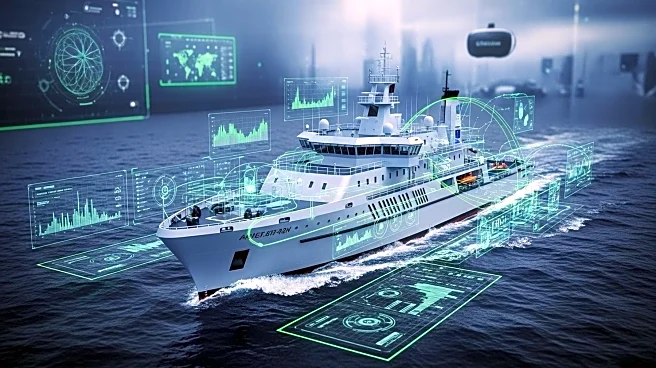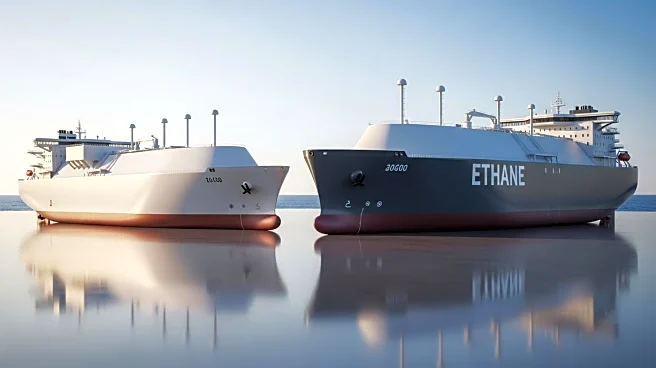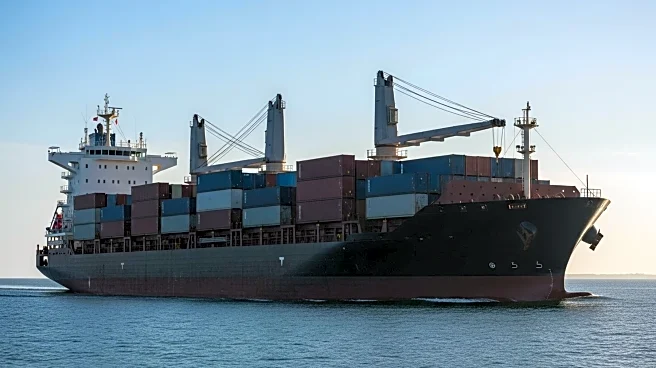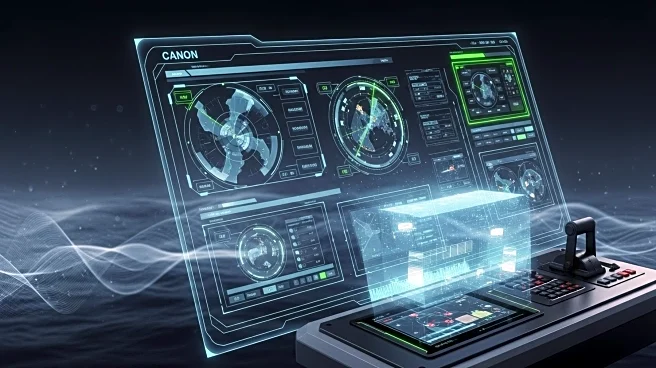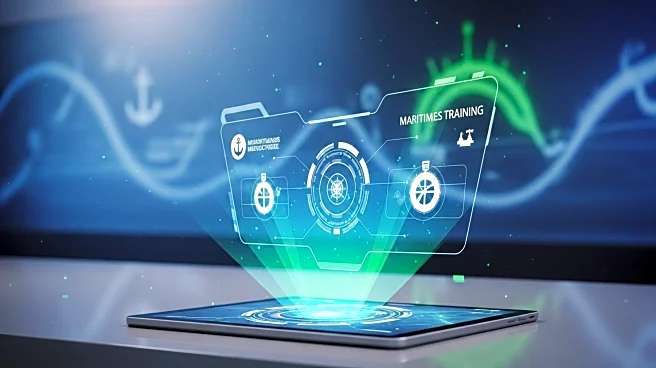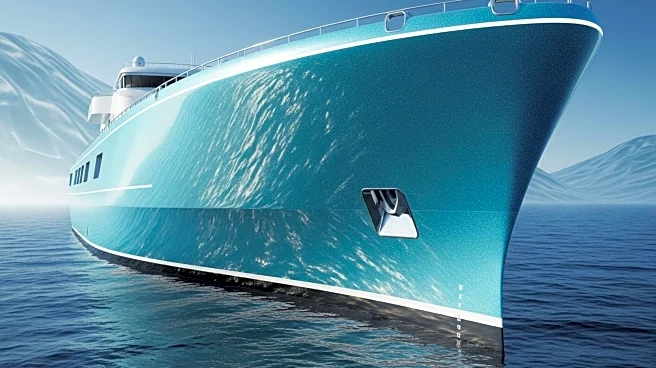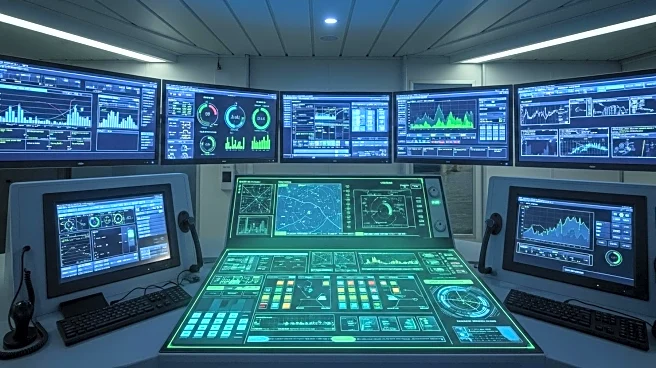What's Happening?
DNV and HD KSOE have announced a strategic collaboration to introduce a next-generation digital twin-based Operator Training Solution (HiDTS-OTS). This innovative system was successfully demonstrated at Gastech and aims to improve the safety and efficiency of maritime operations. The HiDTS-OTS connects to specialized system models via an application programming interface (API) within the DNV Simulation Trust Center (STC), a secure cloud-based environment. This setup allows for realistic, scenario-based training tailored to specific vessel configurations. The training modules offer high-fidelity simulation, ensuring vessel-specific accuracy and operational relevance. The system models are verified by DNV according to their Recommended Practice for the Assurance of Simulation Models, ensuring reliability for scenarios such as failure modes and normal operations. The solution also supports training for complex operations like ammonia fuel handling, aiding in the safer adoption of alternative fuels.
Why It's Important?
This collaboration addresses the critical shortage of seafarers in the shipping industry by leveraging digital twin technology as a key solution. The HiDTS-OTS serves as a core component in realizing next-generation eco-friendly vessel solutions, enhancing crew training and operational safety. By providing a data-, control-, and experience-driven competency management system, the solution ensures that crew training is equivalent to real vessel operations. This advancement is crucial for the shipping industry as it navigates the challenges of adopting alternative fuels and managing complex operations. The partnership between DNV and HD Hyundai reinforces the standards for safe and effective training, preparing the next generation of seafarers for a more complex operational landscape.
What's Next?
The deployment of the HiDTS-OTS is expected to be scalable across training centers and fleets worldwide, providing global accessibility. As the shipping industry continues to face a shortage of skilled seafarers, the adoption of digital twin technology in training is likely to expand. This could lead to further collaborations and innovations in maritime training solutions, enhancing the industry's ability to manage complex and potentially hazardous operations safely. Stakeholders in the maritime industry, including shipowners and training institutions, may increasingly invest in such technologies to ensure operational safety and efficiency.
Beyond the Headlines
The introduction of digital twin technology in maritime training could have long-term implications for the industry. It may lead to a shift in how training is conducted, with a greater emphasis on simulation-based learning. This could also influence regulatory standards and practices, as the industry adapts to new technologies and operational requirements. Additionally, the focus on eco-friendly vessel solutions aligns with global efforts to reduce carbon emissions and promote sustainable practices in shipping.
